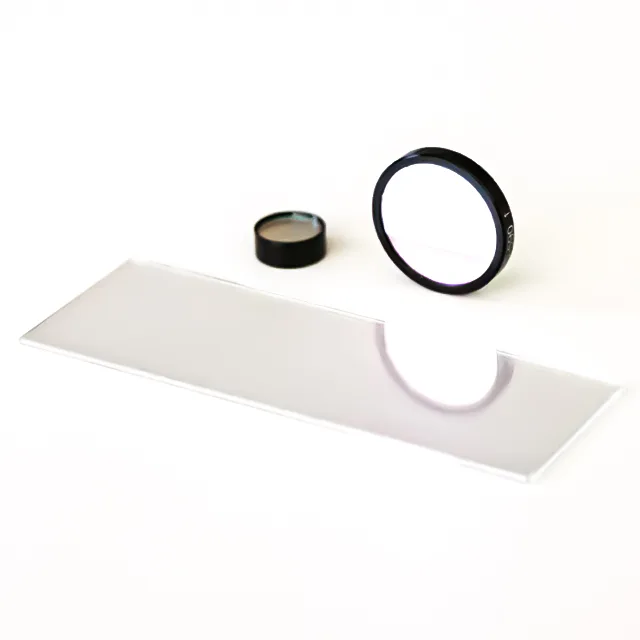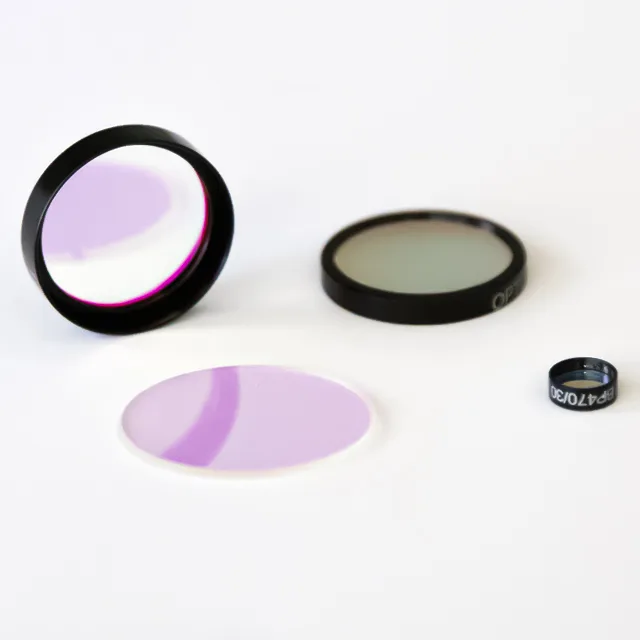Optical low-pass filters have been a staple in camera technology for quite some time. But what about optical low-light filters? These filters are crucial in camera systems and pivotal in improving image quality without breaking the bank.
This article will delve into the world of optical low-pass filters. And explore how they work, the different types available, and where they’re used. By the time you finish reading, you’ll have a solid grasp of why optical low-pass filters are crucial components in your camera setup.
What is an Optical Low Pass Filter?

An optical low-pass filter is a tool that helps prevent strange patterns and blurry lines in digital pictures. It’s also known as a blur filter or Anti-Aliasing filter. These filters help make sure the images look good without costing too much. They work by making the picture a little blurry so it only captures a few details that could mess up the image.
OLPF is a part of digital cameras that helps make pictures look better. It stops strange patterns and blurry lines from showing up in photos. It does this by making the picture a little blurry before it gets to the camera’s sensor. This is helpful in cameras that take prominent pictures because it stops those weird patterns from appearing.
Importance of Optical Low Pass Filters
Optical low-pass filters (OLPFs) are also known as anti-aliasing filters. That plays a significant role in digital photography, but their importance has a twist.
Combating Moiré
OLPFs are like bodyguards for your camera. They stop weird patterns called moiré from showing up in your photos. Moiré happens when the fine details or patterns in what you’re taking a picture of (like clothes or walls with bricks) don’t match up well with the tiny dots on the camera’s sensor. OLPFs blur those tricky details so moiré doesn’t mess up your picture.
Trade-off for Sharpness
By softening some details, OLPFs can reduce image sharpness. This trade-off is a point of debate, especially with high-resolution cameras.
Shifting Importance with Technology
As cameras get better, they do not need OLPFs as much. New sensors have many tiny dots packed close together, so weird patterns like moiré aren’t as likely to happen.
Fancy cameras sometimes let you pick if you want an OLPF or not. This enables photographers to choose what’s best for their pictures.
Types of Optical Low Pass Filters

There are different kinds of filters in cameras. They can be of different types and found in various cameras. Some companies like using one kind while others like another.
One type is called fixed filters. They always stay the same and don’t change. Then, there are adjustable filters. With these, you can change how they work. Both types help take good pictures without costing too much money. Here are types:
1. Anti-Aliasing Filters
An anti-aliasing filter is a low-pass filter with its cutoff frequency set to the Nyquist frequency. This means it removes any higher frequency content in the input signal, as frequencies more elevated than the Nyquist frequency would cause aliasing.
2. Infrared Cutoff Filters
Infrared (IR) cutoff filters are used in cameras with color CCD or CMOS sensors to ensure the images’ colors are accurate. These filters stop the infrared light from getting through while letting the visible light pass. There are two main ways to do this:
- absorption
- reflection
3. Multiband Filters
This filter has unique features that allow it to view multiple colors simultaneously. It lets a lot of light through while blocking unwanted wavelengths. It’s made with solid materials and can handle different environmental conditions like humidity and temperature changes.
Plus, it’s easy to clean. The multiband filter is designed to fit into a black ring and has specific thickness measurements to ensure it works properly.
4. Microlens Array Low Pass Filters
Microlens array low-pass filters, or MLA-LPFs, are special filters that use tiny lenses to do their job. They work like regular optical low-pass filters, letting red light through easily but weakening blue light. Like other filters, this helps prevent weird patterns and blurry lines in digital pictures.
These filters are super advanced. They can let through different kinds of light, giving valuable information for scientific stuff.
Working Principles of Optical Low Pass Filters
1. Anti-aliasing Function of Optical Low Pass Filters
One of the main jobs of optical low-pass filters is to reduce aliasing. Aliasing happens when tiny details in a picture are sharper than what the camera’s sensor can handle. This often results in jagged edges.
To fix this, the filter adds a bit of blur to blend these jagged edges into smooth ones. Even though the image is slightly changed, it looks better overall.
2. Balancing Sharpness and Image Quality
Even though low-pass filters blur only a few pixels in the image, you may have noticed that your pictures still look great. These filters balance sharpness and blur to improve overall image quality. They only add enough blur to remove moire patterns while keeping the rest of the image sharp and true to life.
3. Reduction of Moire Patterns
If you’ve ever taken a picture of something with a textured or grid-like pattern, you might have seen an unwanted effect in the image with rainbow-like colors. These are called moire patterns.
Moire patterns happen when the fine details in the subject clash with the camera’s pixel grid. Optical low-pass filters help fix this by adding a bit of blur. This blurring helps smooth out the patterns, reducing the rainbow effect in those areas of the image.
Designing a Passive Low Pass Filter
Making a passive low-pass optical filter from scratch is problematic because it needs unique materials and tricky manufacturing methods. Here’s why it’s tough:
1. Material Properties
Traditional low-pass filters use unique materials called birefringent materials. These materials change how light moves depending on its polarization. To work with these materials well, you need to understand how they interact with light, how their properties change, and how to handle them carefully.
2. Microlens Arrays
Microlens Array (MLA) filters show potential, but making them involves creating tiny lenses with precise measurements. This requires advanced micromachining techniques that are impossible in a regular home workshop.
3. Optical Design Software
To make a filter work its best, we need special computer programs to simulate how light moves through it and how the filter reacts. These programs consider where we want the filter to start blocking specific wavelengths of light and how complex the filter is.
Testing and Troubleshooting
Testing and troubleshooting involve verifying its performance against your design specifications. Identifying potential issues causing deviations. Here’s a breakdown of the process:
1. Equipment
- Light source
- Spectrophotometer
- Power meter (optional)
2. Testing Procedure
- Set up the light source and adjust the wavelength across the desired range, exceeding the filter’s cutoff wavelength.
- Measure the intensity of the light source using the spectrophotometer. This establishes the reference for the unfiltered light.
- Place the OLPF in the light path between the source and the detector of the spectrophotometer.
- Repeat the measurement with the filter in place. This will show the intensity of light transmitted through the filter at different wavelengths.
3. Compare the two sets of measurements.
- The transmitted light intensity should be high (close to the reference) at wavelengths below the cutoff wavelength (passband).
- The transmitted light intensity should drop (attenuated) at wavelengths above the cutoff wavelength (stopband).
- Analyze the smoothness of the transition between the passband and stopband.
Applications of Low Pass Filters
Here are some critical applications of low-pass filters (OLPFs) in optics:
1. Digital Cameras
OLPFs help digital cameras take clear pictures by removing unwanted patterns called Moiré fringes. These fringes happen when the details in a scene interact with the camera’s pixel grid. OLPFs ensure the images are sharp and accurate by filtering out extra information that could cause problems.
2. Scientific Tools
Scientists use OLPFs in tools like spectrometers and photometers to study light. OLPFs can pick out specific parts of the light spectrum for analysis. For example, they might block out harmful ultraviolet light in microscopes. So scientists can see fluorescence better.
3. Laser Safety Glasses
OLPFs are super crucial in glasses that protect your eyes from lasers. They block out the dangerous laser light while letting regular light through so you can see clearly and stay safe.
Machine vision systems make images more apparent by getting rid of noisy details. This helps machines recognize objects better and find defects more accurately.
4. Lighting and Displays
OLPFs help adjust the colors and ensure the light stays consistent in things like LED lights and screens. They’re like little controllers that keep everything looking right.
Conclusion
Optical low-pass filters are essential in digital imaging. They’ve been around for a long time, providing a fast and affordable way to fix image problems. While newer cameras use them less, they’re still helpful because they can do many jobs.
FAQs
1. How should I set my low pass filter?
Setting a low-pass optical filter isn’t like turning a knob. Most low-pass filters are already made with a specific cutoff wavelength. They’re often put into cameras to fix moiré patterns or used in scientific tools to focus on certain kinds of light. Users can’t change them. Some fancy filters can be customized, but it’s tricky.
You might need to control things like temperature or use specific voltages. This isn’t easy for hobbyists to do.
If you know the desired cutoff wavelength for your application (e.g., blocking UV light for a sensor), you can choose a pre-made filter with that specification. Many filter manufacturers offer various options with specific cutoff wavelengths.
2. How does a low-pass filter work?
You know the wavelength you want to block for your application, like UV light for a sensor; you can pick a ready-made filter with that feature. There are many options from different filter makers with specific wavelengths.
Try combining multiple ready-made filters to strengthen the blocking effect. But this needs some study on how the filters work and some testing. These filters don’t block specific wavelengths but reduce the brightness of all colors evenly. They can be helpful if you need lower light for particular tasks.
Click to learn: What is the optical filter?
